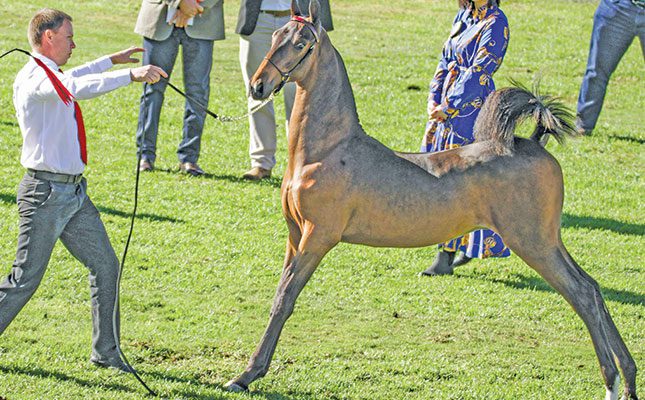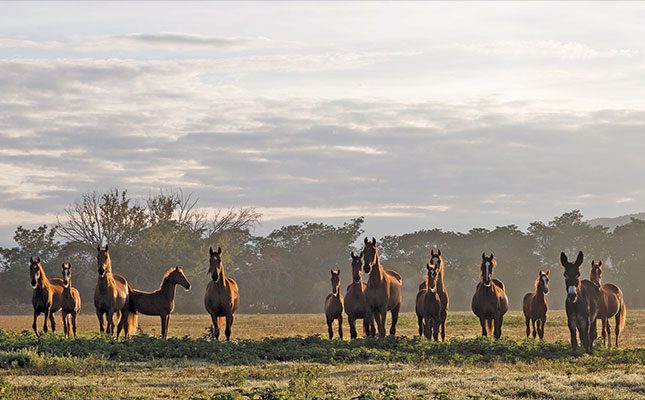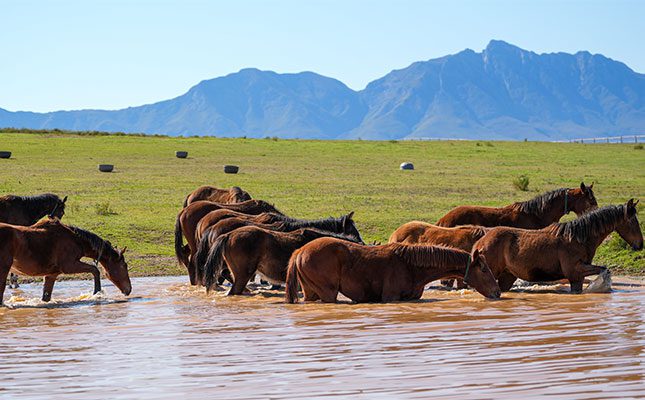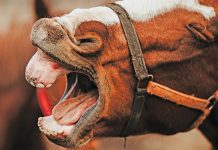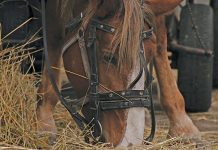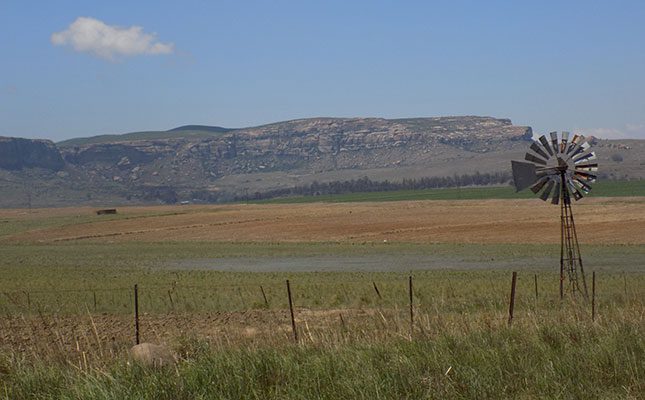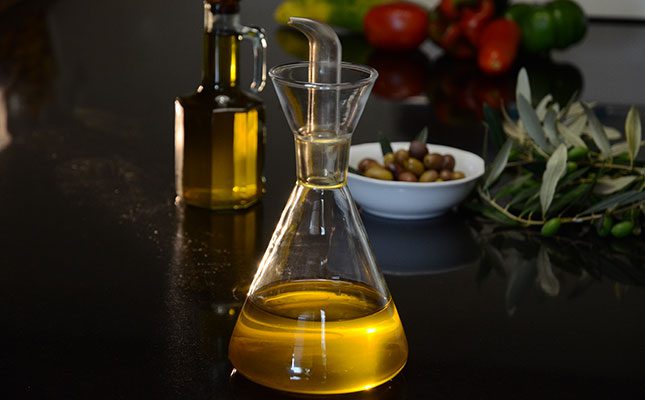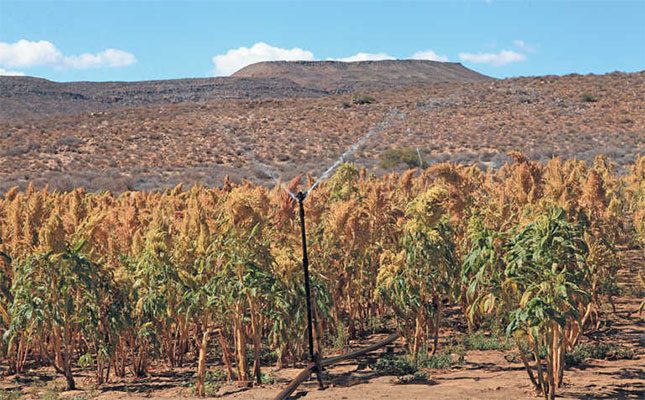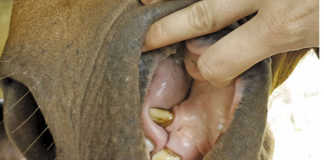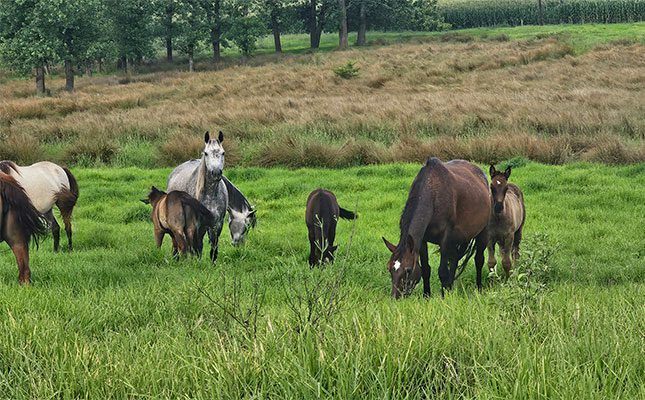
Photo: Supplied
Several years ago in 2017, when KwaZulu- Natal (KZN) cattle farmer George Nefdt was at a crossroads on whether to relocate to Johannesburg for his corporate job or continue some type of operation on his farm Erica at Sevenoaks near Greytown, his life took an entirely unexpected detour.
“I’d always liked horses, and when a position with my current employer Plennegy made it possible for me to stay at the farm, I decided to look into using my kikuyu camps to breed horses.”
As a child, he says there were always horses around the farm, but his interest had never been “serious”.
When he started considering using his pastures to breed horses, he decided to take a look at the SA Boerperd breed. It was at this time that he also heard of the dispersal sale of the breeder Mitzi van Rensburg’s Harmonie Stud.
Nefdt says he sent his father-in-law Kerneels Nortier to attend, and he returned with Erica Stud’s foundation mare, Harmonie Pêrel.
“It wasn’t that he chose her, it was more a case of she chose him,” he recalls.
As Pêrel and another mare grazed around the homestead, he saw in her the potential that would form the basis of what he wished to take forward into the future of the breed. A lot of this had to do with her temperament and type.
Temperament
Nefdt says one of the major non-negotiable factors in any animal he breeds is temperament.
“I am not referring to breeding dull, placid animals with droopy ears. I am talking about an animal that is consistent,” he says.
This was true even in his cattle breeding days, where he realised it was far easier to work with a good tempered animal than one that was volatile and unpredictable.
He admits that when breeding horses for competition, the horse needs a ‘spark’ and energy that will take it to the top of the game, but he remains adamant that a “mad” or bad tempered animal is not worth pursuing.
“If that horse is not safe enough for my grandchildren to ride around on, it is not safe for anybody else either,” he says.
This he rounds off with a focus on creating a hardy, healthy horse that is affordable to maintain. The horse must be a ‘good doer’ and able to sustain a long, healthy life, while requiring less of the expensive high-end feed inputs that are traditionally associated with top-level competition horses.
“I want to make the SA Boerperd an affordable horse for South Africans,” he says.
Five-star rating system
Temperament is just one of five key focus areas on which Nefdt rates all his horses in line with his goals for his stud and the SA Boerperd breed as a whole. The other four are conformation, movement, height and versatility.
Speaking about conformation, some of the key aspects for which he selects include a good hindquarter and strength through the back, and an attractive head with well-set ears.
“You want to see the intelligence in the horse’s eyes,” he says.
Conformation, he says, is also part and parcel of the horse’s movement. Nefdt describes movement as a function of conformation.
“In my opinion, if a horse moves well, it is brought about by good conformation,” he says.
Neftd is also more focused on breeding what is termed a “universal” type of SA Boerperd as opposed to the “traditional” type. (According to the SA Boerperd society’s
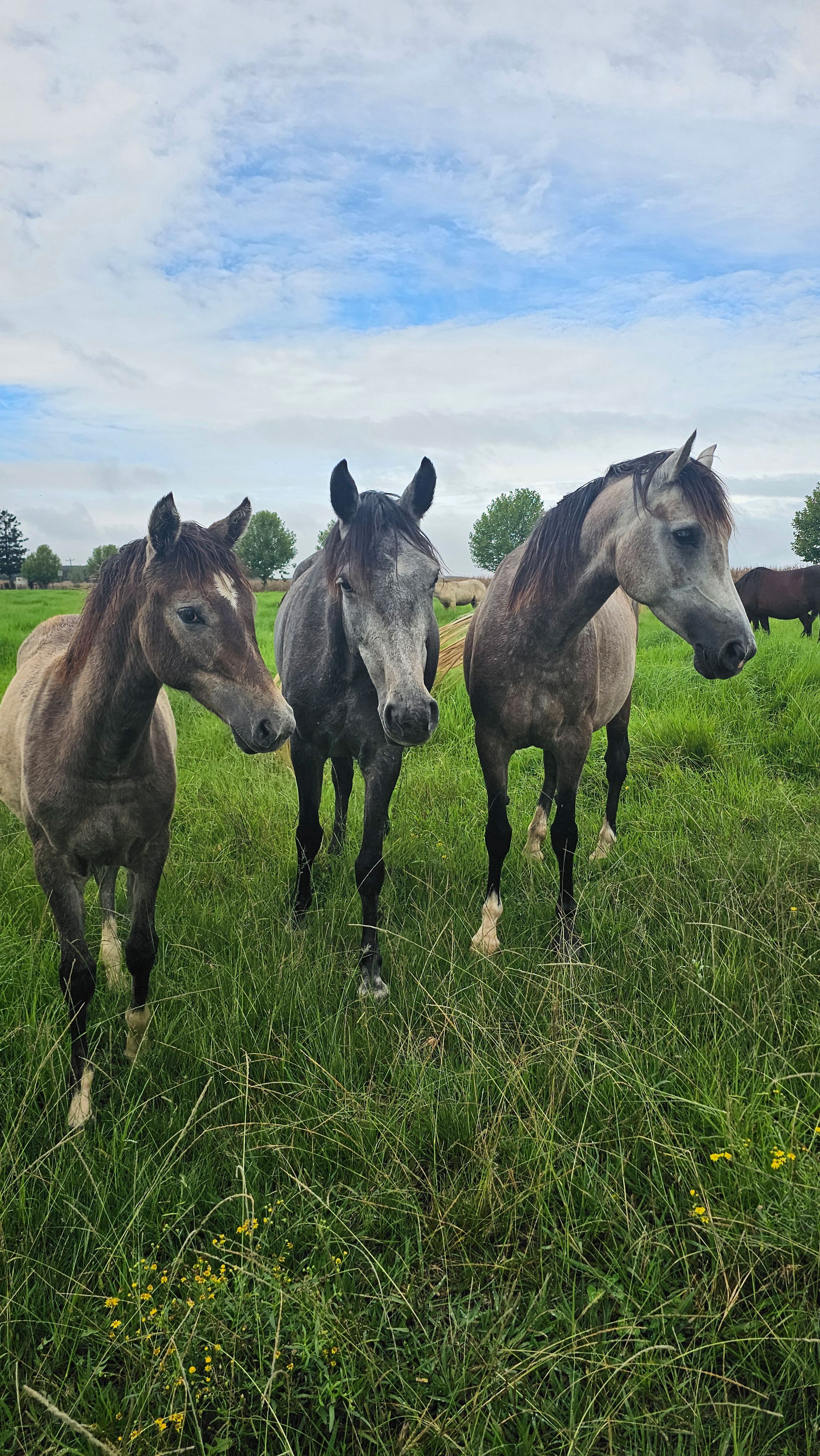
definition of movement, a universal horse has medium to lower knee movement, while a traditional horse has medium to high knee movement.)
He says he is breeding a versatile horse that can be utilised for a variety of purposes, ranging from English riding disciplines like showing, dressage, cross country and showjumping, to Western riding disciplines like cutting, reigning or mounted games. They are also suited to pursuits like trail riding and game viewing, he says.
The SA Boerperd is ideally between 14,2hh and 15,2hh, and although larger sizes are also accepted, Nefdt is an advocate for breeding horses of a size appropriate to their use.
“There are so many stories from the past of smaller horses achieving remarkable things; size is not a measure of success,” he says.
His breeding focus is split to include both ponies (in terms of the competition height restrictions of ponies) and horses.
Ultimately, though, he says the horse should be a companion for life of good temperament, that is sound, strong and healthy, a good doer, adaptable, loyal and intelligent.
Mares or stallions?
Although stallion selection is an important part of his strategy, Nefdt focuses on mares.
“I just love my mares,” he says. “They are responsible for so many of the behavioural attributes and personality [of their offspring]. They teach all the socialising skills.”
Nefdt has a breeding herd of 25 mares, for which he has run tenth generation schematics. Most of the stock is derived from the original A2 lines, as well as the Lang-Carel and Hanke lines, all of which speak to the type he is striving to breed. He says he does this through a
“structured three-way crossbreeding programme”.
He also has a few older mares that he runs with his juvenile herd.
“These older mares teach the weanlings and young stock all the social skills they need to interact in a herd environment and live as horses,” he says.
His stallion at stud, Erica Amethyst, is, however, clearly a favourite child. This is the first of the Erica stallions to have been passed by the SA Boerperd inspectors for breeding status since the establishment of the stud in 2017.
Amethyst is a pony stallion, measuring only 14,2hh, and according to Nefdt, has earned his spot in the breeding programme because he espouses all the ideals of Nefdt’s breeding goals.
“You can walk right up to that stallion and he will be sweet and safe. That is why he is there and why I am using him.”
While Amethyst is currently the seed for his pony lines, Nefdt has been utilising the highly recognised Aandag E-Toll to sire his horse lines for the last three seasons. The stallion has been running with selected mares as part of Nefdt’s focus on specific and broader goals within his master breeding strategy.
E-Toll, owned and ridden by professional trainer Shannah Mayne, is the current SA Boerperd Universal Supreme Champion Stallion (in hand) and National Stallion (ridden).
Nefdt’s stallion selection in recent years has been focused on enhancing traits already present in his mares, as well as bringing about corrective breeding in certain areas like improving forelegs and building the hindquarter for balance. Prior to E-Toll, he utilised the stallion Harmonie Karwats in his herd.
Production basics
Nefdt runs a herd of roughly 75 horses on an area of about 67ha. This comprises about 25 breeding mares, one resident stud stallion, and a handful of older mares, with the balance made up of juveniles ranging from weanlings to four-year-old green, backed horses ready to begin training for sale.
The breeding season is timed so that the mares foal down around August every year, where after the stallions will be placed with the mares until about January of the following year.
The breeding mares are rotated through kikuyu camps of 15ha in size during summer and have access to maize stover and natural sourveld grazing during winter, supplemented as required.
Notice is given to SA Studbook when foals are born, and sampling and collection of DNA specimens as required for registration and identification are submitted by the time the foals are eight months old. Nefdt weans them at 10 months of age.
“Before we wean we will start bringing the mothers and foals in daily and handle them to get them used to everything.”
During the weaning phase, they also castrate any colts that will not be considered for future breeding potential. The weanlings are then integrated into the juvenile herd in the 30ha “dam camp”, where the older mares and the other youngsters teach them how to be good horses.
“The camps have trees and a dam and they can run and develop their bodies while socialising with horses of various ages,” Nefdt explains.
It is here that he personally visits daily and lays hands on his horses as he moves among them, checking on them and getting them used to being handled.
“They are allowed to be horses for four years,” he says.
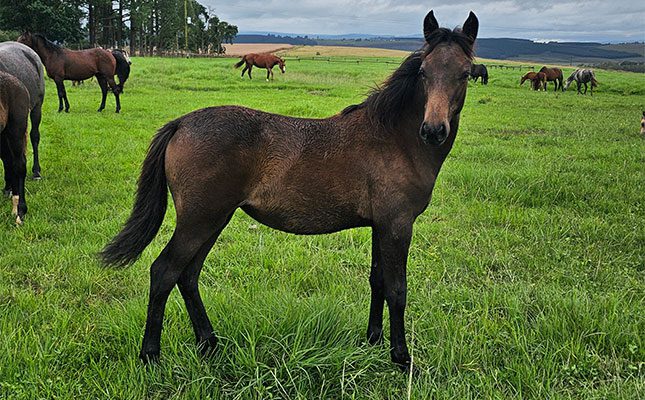
Judgement day
In the year the horses turn four, Nefdt and his team begin the work of preparing them for the next step.
They start bringing them in for basic backing by one of his staff, and the horses are readied for inspection by the SA Boerperd breeders’ society, around March each year. Horses are eligible for inspection from two-and-a-half years of age. Mares and geldings are inspected at the farm by a team of four, comprising three senior inspectors and a learner.
“A mare needs a score of 65% and a gelding at least 60%, in addition to compliance with certain areas, in order to pass,” he explains.
Horses that are accepted are then marked with the official SA Boerperd brand, which Nefdt has chosen to do via freeze branding.
At that stage, Nefdt will send his horses to Mayne for professional backing and schooling.
“I don’t believe in giving a young horse to a stockman to have it ‘ridden through’.
“Shannah is our partner and the trainer we have selected to show all of our stud horses and train the horses going onto the market. She has the expertise to give advice when it comes to the suitability of an individual horse for a specific purpose, and we share the same philosophy on training and competing.”
SA Boerperd stallion selection takes place at a designated venue annually, with only a limited number of horses making the grade. Nefdt says this is an “intense” experience, with stallions requiring at least 70% to pass.
He says this year’s selections were held at the Afridome in Parys in April.
Playing matchmaker
For Nefdt, balance is important in all aspects of his stud. His horses must have a balance of conformation and movement; size and purpose must fit the right proportions; and the horse he produces must be appropriate for the age and requirement of its rider.
He describes the breed as one that has been tempered by the African veld and conditions over generations to create a modern sporting breed that can perform for its owner.
“My purpose is to create a companion horse that you can rely on for its loyalty and willingness,” he says.
Nefdt keeps circling back to purpose and suitability. He is proud of the breed and what it has achieved, and wants people to realise that the SA Boerperd is not just any old farm horse.
“We [the breeders and breeders’ society] have done a lot to improve the SA Boerperd over the years and the inspections continue to hold the breed to the highest level.”
For more information email George Nefdt at [email protected].

